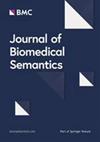情态动词的词根和认知用法:输入的作用
IF 2
3区 工程技术
Q3 MATHEMATICAL & COMPUTATIONAL BIOLOGY
引用次数: 3
摘要
本文研究了儿童如何发现像must这样的情态动词既可以用来表达认知的味道,也可以用来表达“根”(即非认知的)味道。现有的习得文献表明,儿童产生具有认知意义的情态要比产生词根意义晚一年。我们进行了一项语料库研究,以检查语料库中对幼儿和幼儿的言语表达情态的方式,以调查儿童听到的语言输入可能有助于或阻碍他们揭示情态的风味灵活性的方式。我们的研究结果表明,父母使用情态动词的方式可能掩盖了他们可以表达认知口味的事实:情态动词很少在认知上使用。然而,孩子们最终会明白;我们的研究结果表明,有些人甚至在3岁之前就这样做了。为了研究儿童是如何接受认知的味道,我们探索了区分词根和认知的分布线索。语义学文献认为它们在“时间取向”上有所不同(Condoravdi, 2002):虽然认识论可以有现在或过去取向,但词根情态往往受限于未来取向(Werner 2006;Klecha, 2016;Rullmann & Matthewson, 2018)。我们表明,在儿童导向的言语中,这种约束在词根和认识论的方面特征分布中得到了很好的反映,但由于对词根的强烈使用偏见,这种信号可能很弱。我们讨论(a)这些结果对儿童如何获得成人模态表征意味着什么,以及(b)朝向成人模态表征的可能学习路径。本文章由计算机程序翻译,如有差异,请以英文原文为准。
Figuring Out Root and Epistemic Uses of Modals: The Role of the Input
This paper investigates how children figure out that modals like must can be used to express both epistemic and “root” (i.e. non epistemic) flavors. The existing acquisition literature shows that children produce modals with epistemic meanings up to a year later than with root meanings. We conducted a corpus study to examine how modality is expressed in speech to and by young children, to investigate the ways in which the linguistic input children hear may help or hinder them in uncovering the flavor flexibility of modals. Our results show that the way parents use modals may obscure the fact that they can express epistemic flavors: modals are very rarely used epistemically. Yet, children eventually figure it out; our results suggest that some do so even before age 3. To investigate how children pick up on epistemic flavors, we explore distributional cues that distinguish roots and epistemics. The semantic literature argues they differ in “temporal orientation” (Condoravdi, 2002): while epistemics can have present or past orientation, root modals tend to be constrained to future orientation (Werner 2006; Klecha, 2016; Rullmann & Matthewson, 2018). We show that in child-directed speech, this constraint is well-reflected in the distribution of aspectual features of roots and epistemics, but that the signal might be weak given the strong usage bias towards roots. We discuss (a) what these results imply for how children might acquire adult-like modal representations, and (b) possible learning paths towards adult-like modal representations.
求助全文
通过发布文献求助,成功后即可免费获取论文全文。
去求助
来源期刊

Journal of Biomedical Semantics
MATHEMATICAL & COMPUTATIONAL BIOLOGY-
CiteScore
4.20
自引率
5.30%
发文量
28
审稿时长
30 weeks
期刊介绍:
Journal of Biomedical Semantics addresses issues of semantic enrichment and semantic processing in the biomedical domain. The scope of the journal covers two main areas:
Infrastructure for biomedical semantics: focusing on semantic resources and repositories, meta-data management and resource description, knowledge representation and semantic frameworks, the Biomedical Semantic Web, and semantic interoperability.
Semantic mining, annotation, and analysis: focusing on approaches and applications of semantic resources; and tools for investigation, reasoning, prediction, and discoveries in biomedicine.
 求助内容:
求助内容: 应助结果提醒方式:
应助结果提醒方式:


